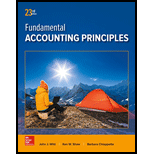
Concept explainers
Job order costing is a system of allocating cost of production to an individual product or group of products. Under job order costing, each individual product or batches of products are treated as separate unit due to its unique features customize by the customers.
Product Cost:
The cost incurred on the production of a particular job or product is called product cost. The cost in production of a product usually involves raw material used, direct labor used and manufacturing
Cost Sheet:
The document which reports all the cost incurred on a particular job is called cost sheet. It contains all necessary information regarding the cost on specific production or job. The cost which typically shown in a cost sheet are; direct material, direct labor and manufacturing overhead.
To determine:
1.
Preparing a job cost sheet for each job worked on during the month.
2.
Prepare
3.
Set up T-accounts and
4.
Prepare a report showing the total cost of each job in process and prove that the sum of their costs equals the Work in Process account balance. Prepare similar reports for Finished Goods Inventory and Cost of Goods Sold.
Want to see the full answer?
Check out a sample textbook solution
Chapter 19 Solutions
Fundamental Accounting Principles
- hello teacher please solve questions general accountingarrow_forwardCampbell Soup Company reported pension expense of $94 million and contributed $81.5 million to the pension fund. Prepare Campbell's journal entry to record pension expense and funding, assuming campbell has no OCI amounts.arrow_forwardProvide accounting questionarrow_forward

 AccountingAccountingISBN:9781337272094Author:WARREN, Carl S., Reeve, James M., Duchac, Jonathan E.Publisher:Cengage Learning,
AccountingAccountingISBN:9781337272094Author:WARREN, Carl S., Reeve, James M., Duchac, Jonathan E.Publisher:Cengage Learning, Accounting Information SystemsAccountingISBN:9781337619202Author:Hall, James A.Publisher:Cengage Learning,
Accounting Information SystemsAccountingISBN:9781337619202Author:Hall, James A.Publisher:Cengage Learning, Horngren's Cost Accounting: A Managerial Emphasis...AccountingISBN:9780134475585Author:Srikant M. Datar, Madhav V. RajanPublisher:PEARSON
Horngren's Cost Accounting: A Managerial Emphasis...AccountingISBN:9780134475585Author:Srikant M. Datar, Madhav V. RajanPublisher:PEARSON Intermediate AccountingAccountingISBN:9781259722660Author:J. David Spiceland, Mark W. Nelson, Wayne M ThomasPublisher:McGraw-Hill Education
Intermediate AccountingAccountingISBN:9781259722660Author:J. David Spiceland, Mark W. Nelson, Wayne M ThomasPublisher:McGraw-Hill Education Financial and Managerial AccountingAccountingISBN:9781259726705Author:John J Wild, Ken W. Shaw, Barbara Chiappetta Fundamental Accounting PrinciplesPublisher:McGraw-Hill Education
Financial and Managerial AccountingAccountingISBN:9781259726705Author:John J Wild, Ken W. Shaw, Barbara Chiappetta Fundamental Accounting PrinciplesPublisher:McGraw-Hill Education





